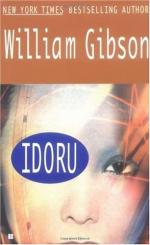|
This section contains 5,141 words (approx. 18 pages at 300 words per page) |

|
SOURCE: Olsen, Lance. “The Shadow of Spirit in William Gibson's Matrix Trilogy.” Extrapolation 32, no. 3 (fall 1991): 278-89.
In the following essay, Olsen discusses spirituality, technology, and postmodernism in Neuromancer, Count Zero, and Mona Lisa Overdrive, which are also collectively known as Gibson's matrix trilogy.
Although what may finally matter most in the history of speculative fiction are the differences rather than the similarities among the loose group whose names have been connected with cyberpunk (including Rudy Rucker, Lewis Shiner, John Shirley, Greg Bear, Pat Cadigan, and others), it is nonetheless significant that during the middle of the last decade a number of writers in this amalgam viewed themselves as belonging to a movement that shared a vaguely defined but deeply felt sensibility.1 As late as 1986, many of the key figures such as Tom Maddox, Marc Laidlaw, and Paul di Filippo, contributed to Bruce Sterling's anthology Mirrorshades, which Sterling prefaced...
|
This section contains 5,141 words (approx. 18 pages at 300 words per page) |

|


